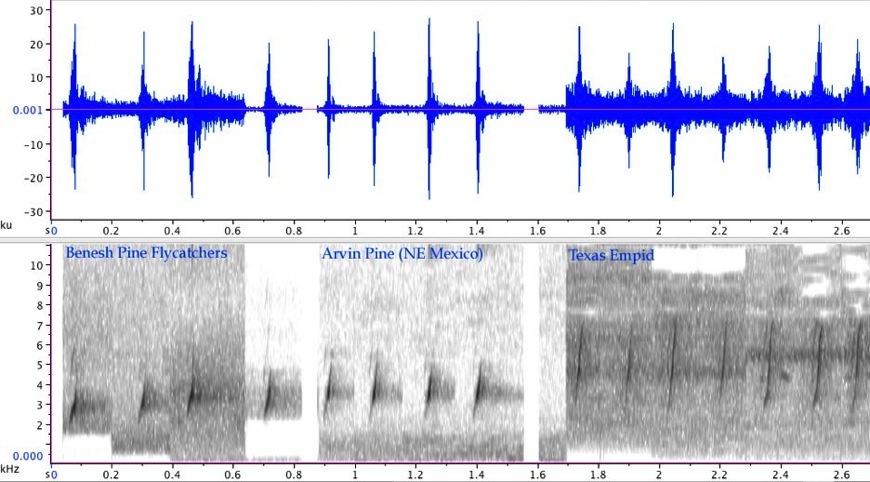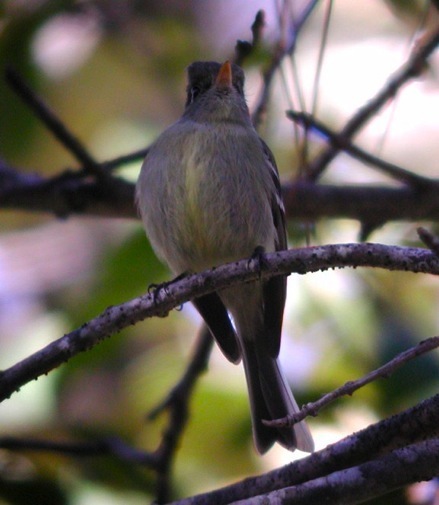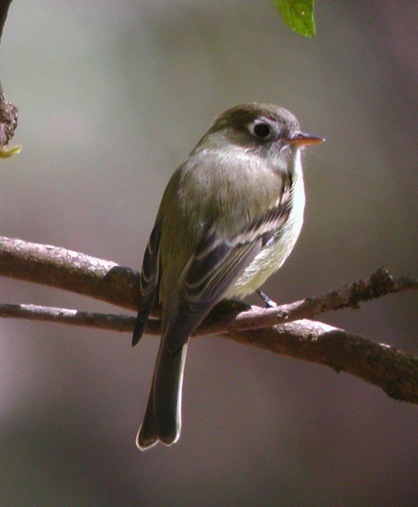Choke Canyon flycatcher

Pine flycatcher or not?


Figure 1. Comparison of Empidonax calls of potential candidates for the identity of the Choke Canyon bird. Note that Pine Flycatcher calls are lowest in pitch, and that calls of the Texas bird are similar in pitch and structure to that of Least Flycatcher.
Figure 2. Another comparison of calls of Pine Flycatcher with calls made of the Choke Canyon bird (from three videotape clips by Mel Cooksey). The first four Pine Flycatcher calls are from Michoacan, Sinaloa, Colima,and Jalisco. The second four are from Coahuila and were recorded by John Arvin.


Figures 3 & 4. Two more images of Pine Flycatcher from Sinaloa, Mexico. Photos were taken February 16, 2004. Notice the long primary projection of the bird on the right. The two recordings are of birds from Sinaloa and Colima, Mexico. Images and recordings are both © Chris Benesh.
Figure 5. To address Keith Bartels’ question about source recordings for the call comparisons, I have attached a spectrogram comparing the following calls. The (A) sample was that recorded by Sheridan Coffey on January 1, 2009. This is one of two call used by Jaramillo to produce the spectrogram on Martin Reid’s page. Notice that the sound is clipped about about 5.7 kHz. Sample (B) is a note from a video shot by Mel Cooksey on January 3, 2009 during the playback experiment. Sample (C) is Arvin’s recording of a Pine Flycatcher from Coahuila, Mexico, and (D) is a call note of Least Flycatcher. Note that although sample (A) is clipped, it has the same structure as (B), rather than the structure of (C) Pine Flycatcher. I believe it to be a clipped note from the same bird that produced call (B). Sample (E) is from the KSAT video story about the Pine Flycatcher, featuring video of a calling Empidonax perched on a fence wire. This bird is now generally regarded as being a Least Flycatcher, as the spectrogram also suggests.

